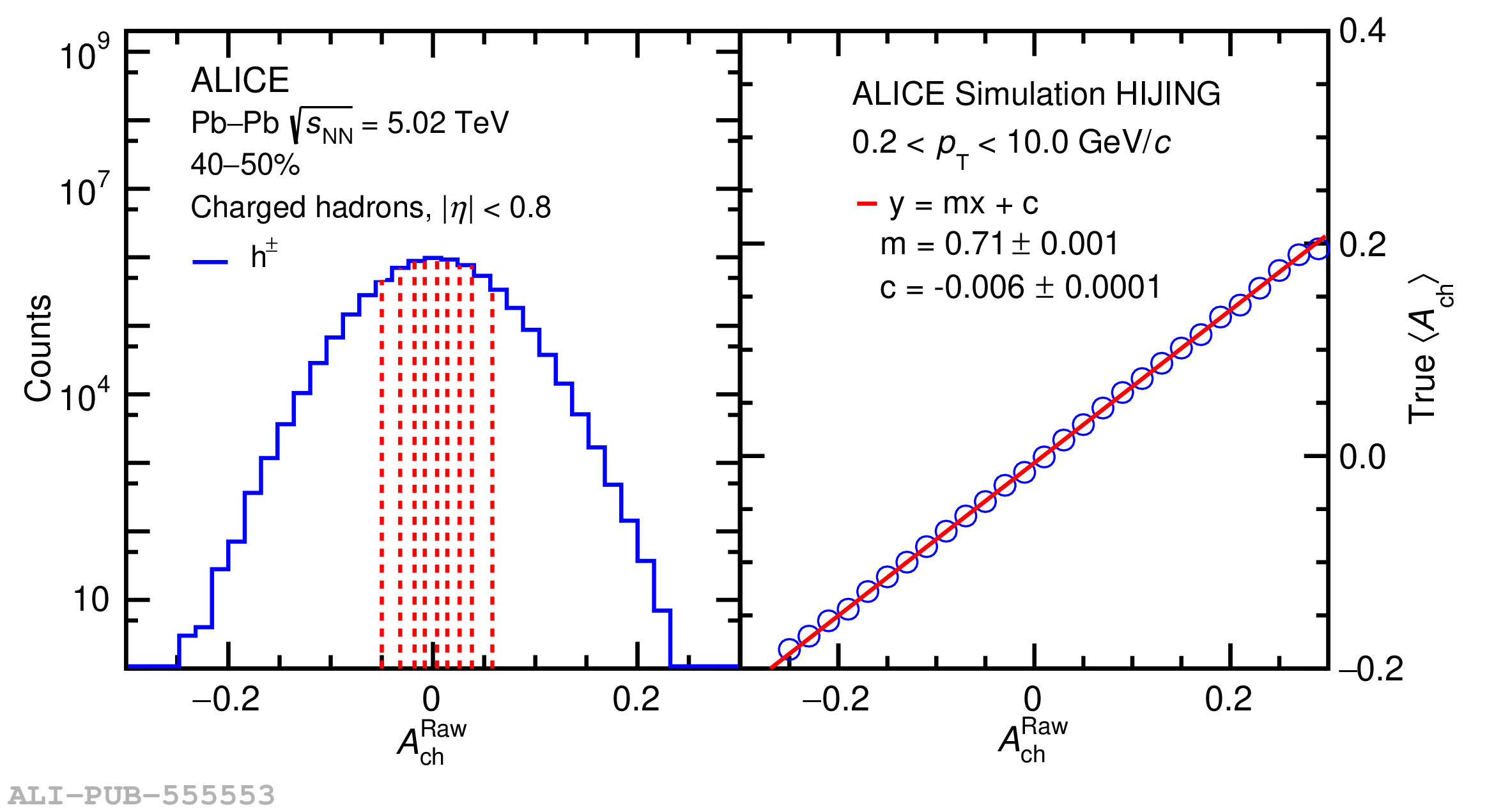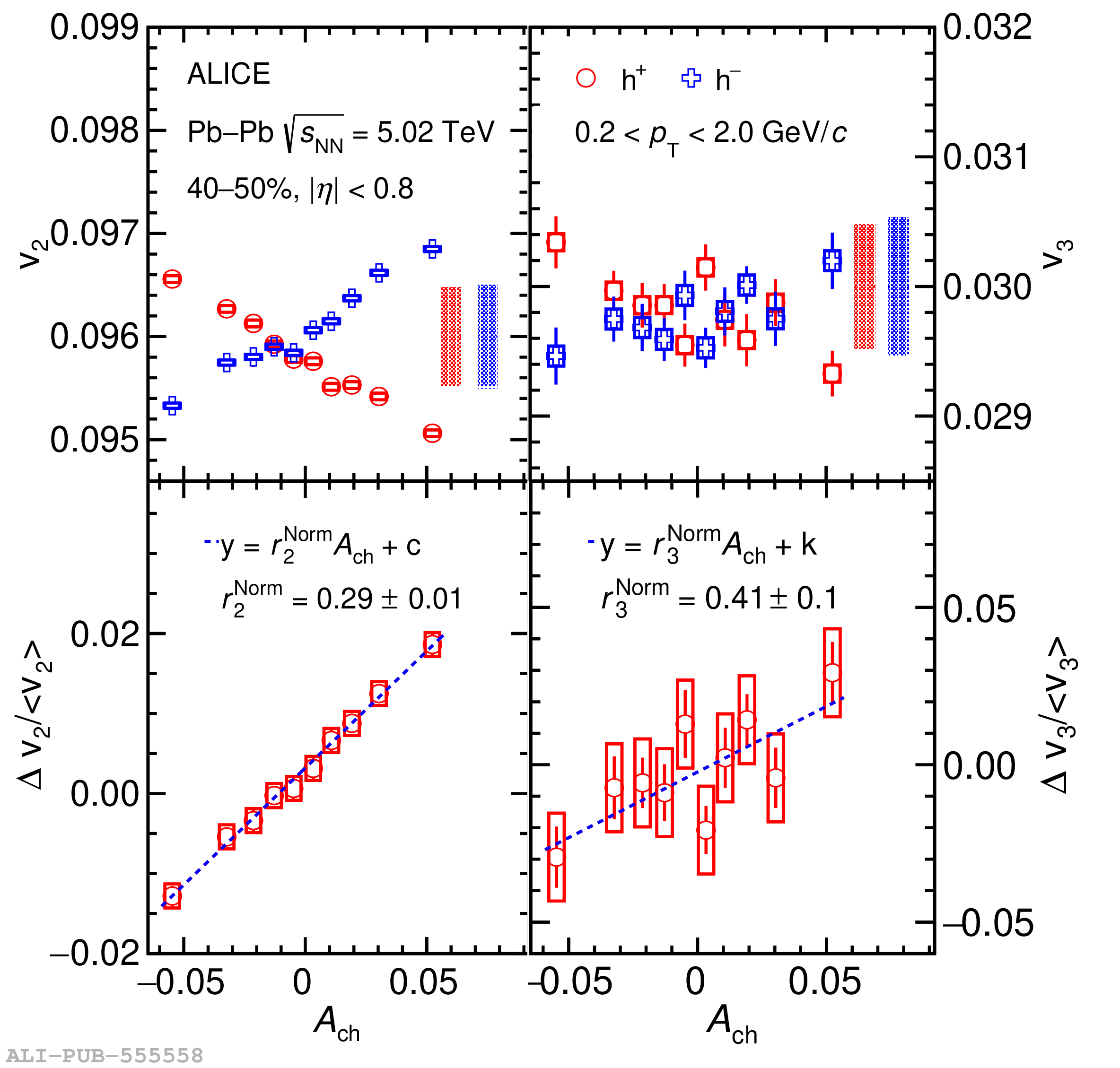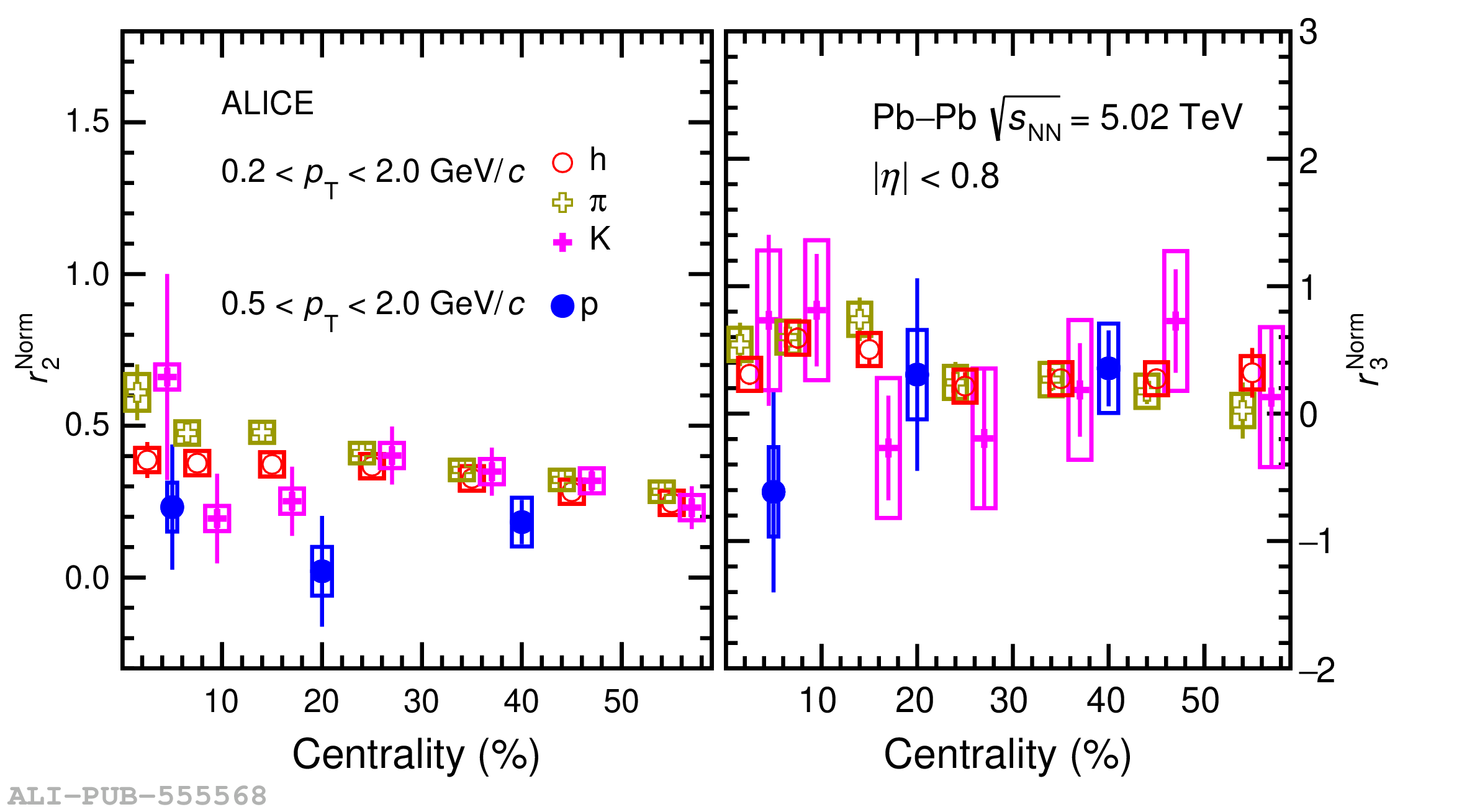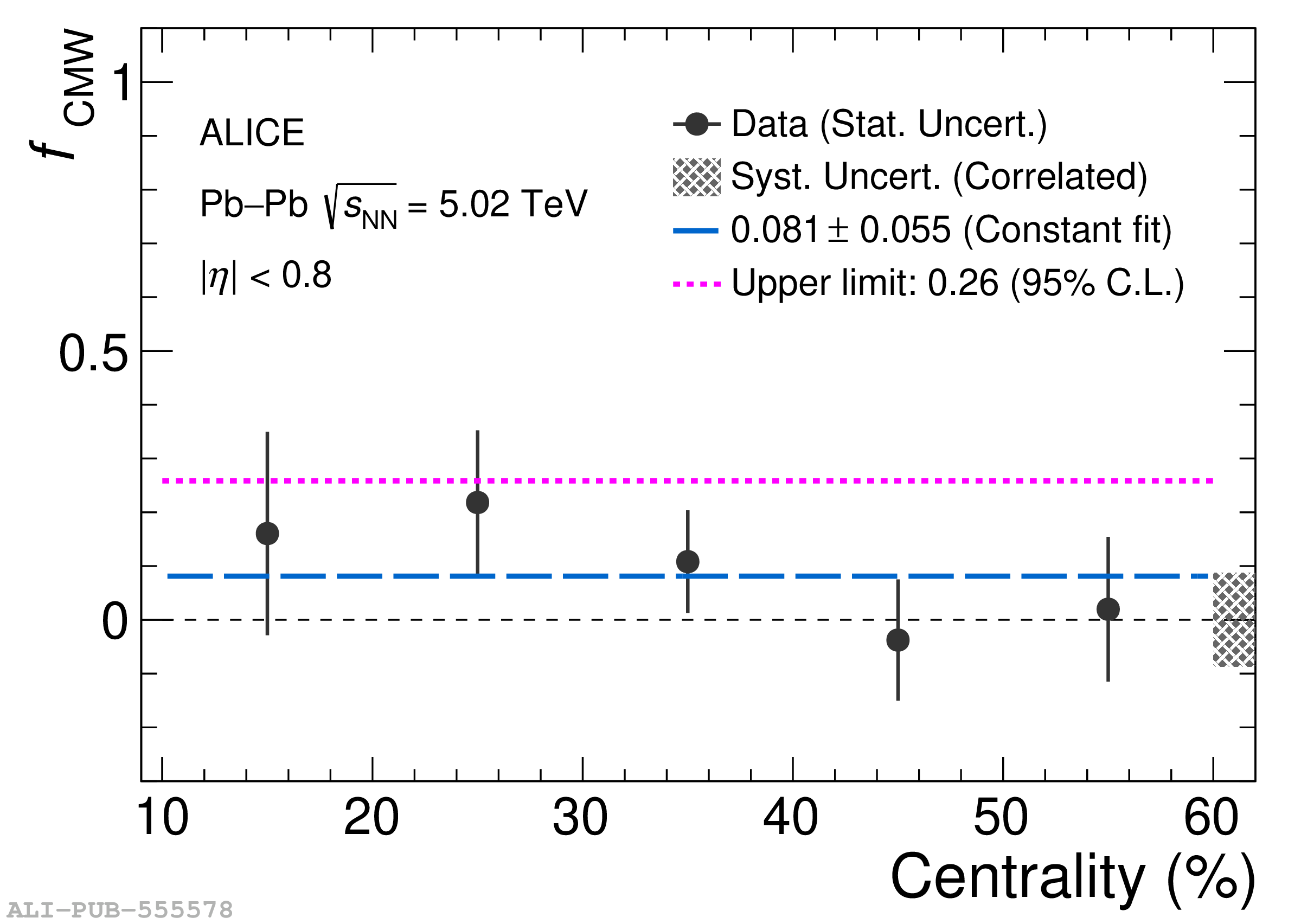The Chiral Magnetic Wave (CMW) phenomenon is essential to provide insights into the strong interaction in QCD, the properties of the quark-gluon plasma, and the topological characteristics of the early universe, offering a deeper understanding of fundamental physics in high-energy collisions. Measurements of the charge-dependent anisotropic flow coefficients are studied in Pb-Pb collisions at center-of-mass energy per nucleon-nucleon collision $\sqrt{s_{\mathrm{NN}}}=$ 5.02 TeV to probe the CMW. In particular, the slope of the normalized difference in elliptic ($v_{2}$) and triangular ($v_{3}$) flow coefficients of positively and negatively charged particles as a function of their event-wise normalized number difference, is reported for inclusive and identified particles. The slope $r_{3}^{\rm Norm}$ is found to be larger than zero and to have a magnitude similar to $r_{2}^{\rm Norm}$, thus pointing to a large background contribution for these measurements. Furthermore, $r_{2}^{\rm Norm}$ can be described by a blast wave model calculation that incorporates local charge conservation. In addition, using the event shape engineering technique yields a fraction of CMW ($f_{\rm CMW}$) contribution to this measurement which is compatible with zero. This measurement provides the very first upper limit for $f_{\rm CMW}$, and in the 10-60% centrality interval it is found to be 26% (38%) at 95% (99.7%) confidence level.
JHEP 12 (2023) 067
HEP Data
e-Print: arXiv:2308.16123 | PDF | inSPIRE
CERN-EP-2023-191
Figure group






